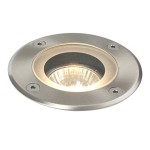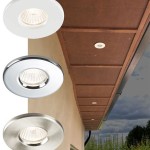How To Light Outdoor Portraits
Lighting is a critical aspect of portrait photography, significantly impacting the mood, depth, and overall quality of the image. While natural light offers a readily available source, understanding its nuances and how to manipulate it is essential for capturing compelling outdoor portraits. This article explores various techniques and equipment options to achieve professional-looking results.
Understanding Natural Light
Natural light varies considerably depending on the time of day, weather conditions, and surrounding environment. Photographers often prefer the "golden hour," the period shortly after sunrise or before sunset, for its soft, warm, and directional light. Overcast days provide diffused light, minimizing harsh shadows and creating even illumination, ideal for portraits with a softer aesthetic. Direct sunlight, especially during midday, presents challenges with strong highlights and dark shadows, often requiring modification for flattering portraits.
Utilizing Open Shade
Open shade is a versatile and readily available tool for outdoor portrait lighting. Positioning the subject in the shade of a building, tree, or other large object creates a diffused lighting environment. This technique softens the light, reducing harsh shadows and providing a more even exposure across the subject's face. When using open shade, pay attention to the direction of the light source; ideally, the open side of the shade should face the broader expanse of the sky for optimal illumination.
Backlighting Techniques
Backlighting, where the primary light source is behind the subject, can create dramatic and visually appealing portraits. This technique can produce a rim light effect, separating the subject from the background and adding depth. However, proper exposure control is crucial to avoid silhouetting the subject. Exposure compensation or reflectors can be used to ensure the subject is adequately lit while retaining the backlit effect.
Reflectors: Shaping and Controlling Light
Reflectors offer a cost-effective and portable solution for manipulating natural light. These tools bounce light back onto the subject, filling in shadows and creating a more balanced exposure. Different reflector surfaces offer varying effects; white reflectors provide a neutral fill, silver reflectors increase brightness and contrast, and gold reflectors add a warm cast. The size and placement of the reflector will determine the intensity and spread of the reflected light.
Introducing Artificial Light: Speedlights and Strobes
While natural light is often preferred for outdoor portraits, incorporating artificial light can enhance control and creativity. Speedlights and strobes provide a portable and powerful light source that can be used to supplement existing light, overpower the sun, or create unique lighting scenarios. These devices can be mounted on stands, held off-camera with assistants, or triggered remotely for greater flexibility.
Modifiers for Artificial Light
Light modifiers, such as softboxes, umbrellas, and grids, are essential tools for shaping and controlling artificial light. Softboxes diffuse light, creating a softer, more even illumination. Umbrellas offer a broader spread of light and are generally more portable. Grids restrict the spread of light, providing more directional control and minimizing spill. Selecting appropriate modifiers depends on the desired aesthetic and lighting style.
Understanding Light Temperature and White Balance
Light temperature, measured in Kelvin, influences the color cast of an image. Natural light varies in temperature throughout the day, from warmer tones at sunrise and sunset to cooler tones during midday. Artificial lights also have varying color temperatures. Setting the appropriate white balance ensures accurate color rendition. While auto white balance can be effective, using a custom white balance or adjusting in post-production offers greater control.
Practical Considerations for Outdoor Portrait Lighting
Several practical considerations can significantly impact the success of outdoor portrait sessions. Planning the shoot around the desired lighting conditions is essential. Scout locations in advance to assess the available light and identify potential challenges. Communication with the subject is crucial to ensure comfort and cooperation. Finally, having backup equipment, including batteries and light stands, can prevent unforeseen issues from disrupting the shoot.
Experimentation and Practice
Mastering outdoor portrait lighting takes practice and experimentation. Exploring different techniques, equipment, and lighting scenarios builds experience and develops a personal style. Analyzing the work of other photographers can also provide inspiration and insights. Continuous learning and refinement are crucial for improving skills and achieving consistent, high-quality results in outdoor portrait photography.

Applying The 3 Light Studio Setup To Outdoor Portraits

Applying The 3 Light Studio Setup To Outdoor Portraits

Help The Sun Using Artificial Light In Outdoor Photography Learn By Zoner Photo Studio

11 Outdoor Portrait Photography Tips For Easy Shots

The Best Lighting For Outdoor Photography Focus

How To Mix Ambient Light And Fill Flash For Outdoor Portraits

Lighting Gear For Outdoor Portraits B H Explora

Off Flash Vs Natural Light Which Is Best For Outdoor Portraits Shutterbug

How To Mix Ambient Light And Fill Flash For Outdoor Portraits Photography Tutorials Portrait

4 Natural Light Outdoor Portrait Setups Using The Perfect Modifier
Related Posts







